 Let’s say you have the luxury of a few days or weeks before you have to launch a major communications plan. You’ve thought through the full range of constituents, tailored your messaging to the last target, and sequenced your timing to the second. It’s the perfect plan, and you’re ready to rock.
Let’s say you have the luxury of a few days or weeks before you have to launch a major communications plan. You’ve thought through the full range of constituents, tailored your messaging to the last target, and sequenced your timing to the second. It’s the perfect plan, and you’re ready to rock.
Or are you?
Even the best-planned communication and marketing strategies have risks of one sort or another associated with them, and the professionals putting them together owe it to business, their executive sponsors and themselves to articulate those risks in every plan. Some call them “red flags” or “watch outs,” but I call them “hot spots.” The point is to ensure you call them out.
I once had a few weeks to pull together a massive communication plan associated with a major restructuring. It included closing
quite a few production facilities, one of which had only been open a few years. There had been coverage of the very same community by a network news crews about another company closing its fairly new plant. It was, most definitely, a “hot
spot” in the plan, and I made note of it with every iteration of the plan that was reviewed by the management team. And there were other hot spots associated with other plants and headquarter locations.
It’s easy to question why hot spots need to be articulated in planning and execution, so here are a few answers as to why it’s not just a good thing to include – it’s mandatory in best-in-class communication plans.
It makes for a better plan – Once you’ve identified your hot spots, it demands plans for mitigation. You may not be able to eliminate them, but chances are you can manage them or lessen the risks. That makes a better plan. This is good.
It helps manage expectations – If you’ve identified the hot spots up front with key stakeholders, they won’t be surprised to see a “flare up” as you execute your plans, and begin reporting on how the plan is going. Few would disagree that surprises are not good things for executives. Tell them up front, show how you’re reducing risk around them,and keep reminding your stakeholders as you work through and review stages of the plan and report on progress.
It engages resources that can help – There’s nothing like a big plan with a “hot spot” on it to get the attention of senior leaders. And good senior leaders want to help mitigate risks, too. So, identifying and highlighting hot spots can yield additional resources to help you manage your hot spot(s).
It shows anticipatory intelligence – Okay, I admit those are pretty fancy words for saying, “It shows you’re smart,” but sometimes it’s just good to use words with more than a few syllables. Seriously, when you show that you anticipate, and even better how you’re addressing risks, it shows executives (often who are reviewing your work) that you’re thinking about more than the base plan. They’ll see you thinking ahead of the curve, in a far more strategic way. And, hey, who doesn’t want to be viewed that way these days?
Not all hot spots are the same, so another good option is toprioritize them. I always coded them red and yellow to show which were most likely to be real risks, verses others that were either not as likely to be significant issues, or that mitigation plans were likely to make low/er risk.
Does your current plan list hot spots? Ignore that element of a plan, and the only one in a hot spot may be you. Do yourself a favor, look good doing it, and deliver a better plan by making hot spots a standardelement of your strategic thinking.


